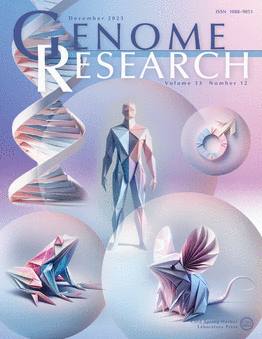有效整合空间组学数据,用于联合域检测、匹配和与stMSA对齐
IF 5.5
2区 生物学
Q1 BIOCHEMISTRY & MOLECULAR BIOLOGY
引用次数: 0
摘要
空间组学(SO)是一种强大的方法,可以在组织结构的空间背景下研究基因、蛋白质和其他分子特征。随着SO数据集的可用性越来越高,研究人员渴望从更大的数据集中提取生物学见解,以获得更全面的理解。然而,现有的方法侧重于批量效应校正,往往忽略了组织切片中复杂的生物模式,使特征整合复杂化,并在将转录组学与其他组学层结合时提出了挑战。在这里,我们介绍了stMSA(空间多片/组学分析),这是一种结合了图自编码器技术的深度图对比学习模型。stMSA专门设计用于生成批校正表示,同时保留每个切片内不同的空间模式,同时考虑集成期间的批内和批间关系。广泛的评估表明,即使面对不同的实验方案和测序技术,stMSA在区分不同切片的组织结构方面也优于最先进的方法。此外,stMSA通过整合空间蛋白质组学和转录组学数据,有效地破译复杂的发育轨迹,并在三维组织重建的横切片匹配和比对方面表现出色。本文章由计算机程序翻译,如有差异,请以英文原文为准。
Efficient integration of spatial omics data for joint domain detection, matching, and alignment with stMSA
Spatial omics (SO) is a powerful methodology that enables the study of genes, proteins, and other molecular features within the spatial context of tissue architecture. With the growing availability of SO datasets, researchers are eager to extract biological insights from larger datasets for a more comprehensive understanding. However, existing approaches focus on batch effect correction, often neglecting complex biological patterns in tissue slices, complicating feature integration and posing challenges when combining transcriptomics with other omics layers. Here, we introduce stMSA (SpaTial Multi-Slice/omics Analysis), a deep graph contrastive learning model that incorporates graph auto-encoder techniques. stMSA is specifically designed to produce batch-corrected representations while retaining the distinct spatial patterns within each slice, considering both intra- and interbatch relationships during integration. Extensive evaluations show that stMSA outperforms state-of-the-art methods in distinguishing tissue structures across diverse slices, even when faced with varying experimental protocols and sequencing technologies. Furthermore, stMSA effectively deciphers complex developmental trajectories by integrating spatial proteomics and transcriptomics data and excels in cross-slice matching and alignment for 3D tissue reconstruction.
求助全文
通过发布文献求助,成功后即可免费获取论文全文。
去求助
来源期刊

Genome research
生物-生化与分子生物学
CiteScore
12.40
自引率
1.40%
发文量
140
审稿时长
6 months
期刊介绍:
Launched in 1995, Genome Research is an international, continuously published, peer-reviewed journal that focuses on research that provides novel insights into the genome biology of all organisms, including advances in genomic medicine.
Among the topics considered by the journal are genome structure and function, comparative genomics, molecular evolution, genome-scale quantitative and population genetics, proteomics, epigenomics, and systems biology. The journal also features exciting gene discoveries and reports of cutting-edge computational biology and high-throughput methodologies.
New data in these areas are published as research papers, or methods and resource reports that provide novel information on technologies or tools that will be of interest to a broad readership. Complete data sets are presented electronically on the journal''s web site where appropriate. The journal also provides Reviews, Perspectives, and Insight/Outlook articles, which present commentary on the latest advances published both here and elsewhere, placing such progress in its broader biological context.
 求助内容:
求助内容: 应助结果提醒方式:
应助结果提醒方式:


